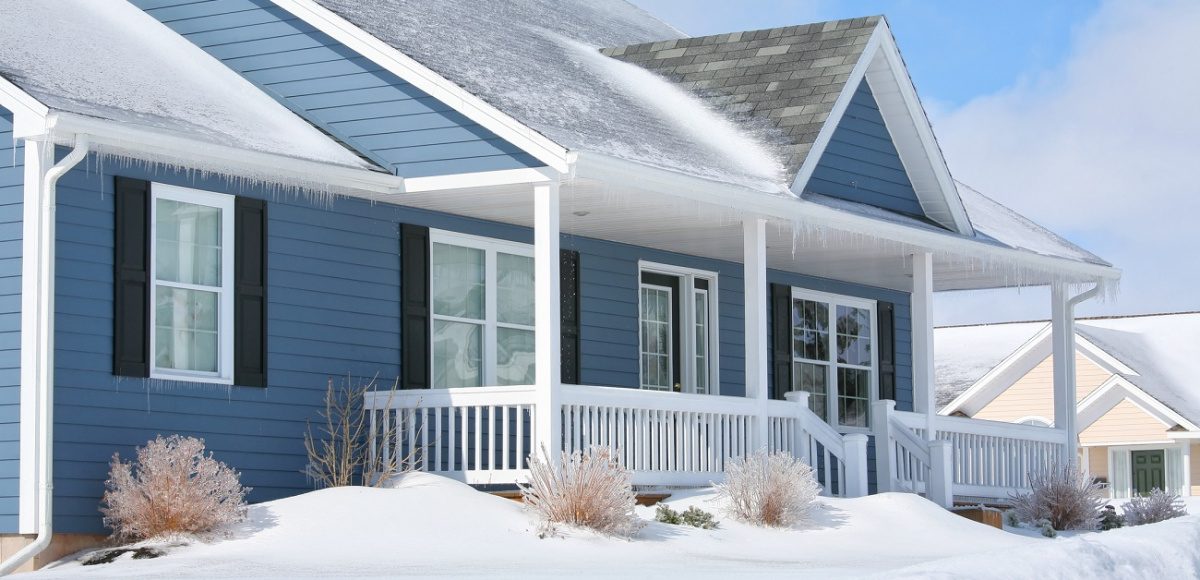I saw this article in REALTOR® Magazine recently and it resonated with me because I got to thinking that we really take our home's foundation for granted. Most foundations/slabs, these days, are poured concrete and concrete is not an imperious substance. It's why we coat the outside of the foundation with an imperious substance.
Many times a white fuzzy substance will appear on the inner wall of a foundation which, is called efflorescence. That white fuzzy substance is dried-up salt deposits left behind by evaporated water coming through the basements. I noticed that in my garage a few years ago so I scrubbed the walls and applied waterproofing to them since I wasn't going to dig around the foundation.
Enjoy the article then check out your foundation.
How Does a Deep Freeze Affect a Home’s Foundation?

Many areas of the country are experiencing blistering cold weather, even those that aren’t used to freezing temperatures. Rapid temperature swings could cause substantial issues to a home’s foundation, warns Groundworks, a nationwide foundation services company.
Every year, one in 60 homeowners file claims related to water damage or freezing, according to the Insurance Information Institute. That accounted for nearly 20% of all insurance claims in 2020—at an average cost of more than $10,000 per claim. The price tag to fix a damaged foundation could easily stretch even higher.
REALTOR® Magazine caught up with Brian Black, Groundworks’ director of sales training and business development, to learn more about how a harsh winter could be affecting a home’s foundation and the signs of potential damage.
Q: How can cold, wintry weather damage a home?
A: Brutal cold is damaging in several ways, depending on your home’s foundation type. If you live above a crawl space, your home’s pipes are typically located beneath the floors. Freezing temperatures can cause pipes to burst, resulting in extensive damage. Frozen pipes are more than just frustrating. According to the Federal Emergency Management Agency, a one-inch flood caused by a broken pipe can result in about $25,000 in damage.
If you have a basement or slab foundation, it’s the concrete you need to worry about. Concrete is porous, meaning it absorbs water. Water expands when it freezes, causing concrete to break and crack. When the spring thaw eventually arrives, water can easily find its way into your home through these cracks.
Furthermore, frozen ground is one of the three causes of inward basement wall movement. The other two are the weight of the soil and the weight of water in the soil. When these three contributors combine, it pushes basement walls inward.
What are the signs to look for?
For homes with a crawl space, the first sign of a problem is cold floors. As the issue progresses, homeowners will notice a problem when a faucet is no longer working. If none of the faucets are running, the frozen pipe is probably near the main water line.
Homeowners with basements and slab foundations should look for cracks both inside and outside their home. Cracks can vary in size and direction. That can help tell professionals why the problem is occurring. Inward wall failure will show as horizontal and vertical cracks on the basement wall or even drywall.
What should homeowners do if they suspect any damage to their foundation?
It’s best to have a foundation specialist inspect any cracks as soon as possible. Your home’s foundation supports everything in your house. If it’s damaged, you’ll discover costly secondary problems very quickly. So, it’s best to act fast.
Foundation work isn’t a DIY project. Choosing a company with the knowledge and tools to best solve your specific foundation problem is the best choice. Look for a company that customizes repair options to your home, offers long-term warranties and has a history of working with the specific soil and climate in your area.
What makes a home vulnerable to frozen pipes?
First, it’s important to understand where the majority of your pipes are located. In different parts of the country, pipes are installed in different areas of a home. In warm-weather regions, pipes are weatherized to handle summer heat and are placed in exterior walls and attics. But this makes them vulnerable to damage during rare cold events. In cooler climates, pipes are often located within the floor joists in basements and crawl spaces.
The best way to prevent frozen pipes and create a more comfortable environment overall is to seal out any outside air through encapsulation. But there are some easy steps you can take to beat the freeze and keep water flowing right now. Consider insulating pipes, allow for a constant drip, open cabinets to allow for warm air circulation and remember to leave the heat on and keep a consistent temperature throughout your home during the winter.
What can homeowners do to “winterize” their property?
The number one most effective route to winterize your crawl space is through encapsulation. Sealing your crawl space from outside air and circulating warm, conditioned air protects pipes and creates a more comfortable living environment. Plus, you can save nearly 20% on your energy bills.
Homes with basements have a similar process involving sealing the rim joist where pipes enter and exit the home, along with moving warm air throughout your home. All homeowners should check for plumbing leaks and look to improve energy efficiency by replacing filters or adding a smart schedule on their thermostat before sub-zero temperatures and blustery winter weather hits.





Comments(6)